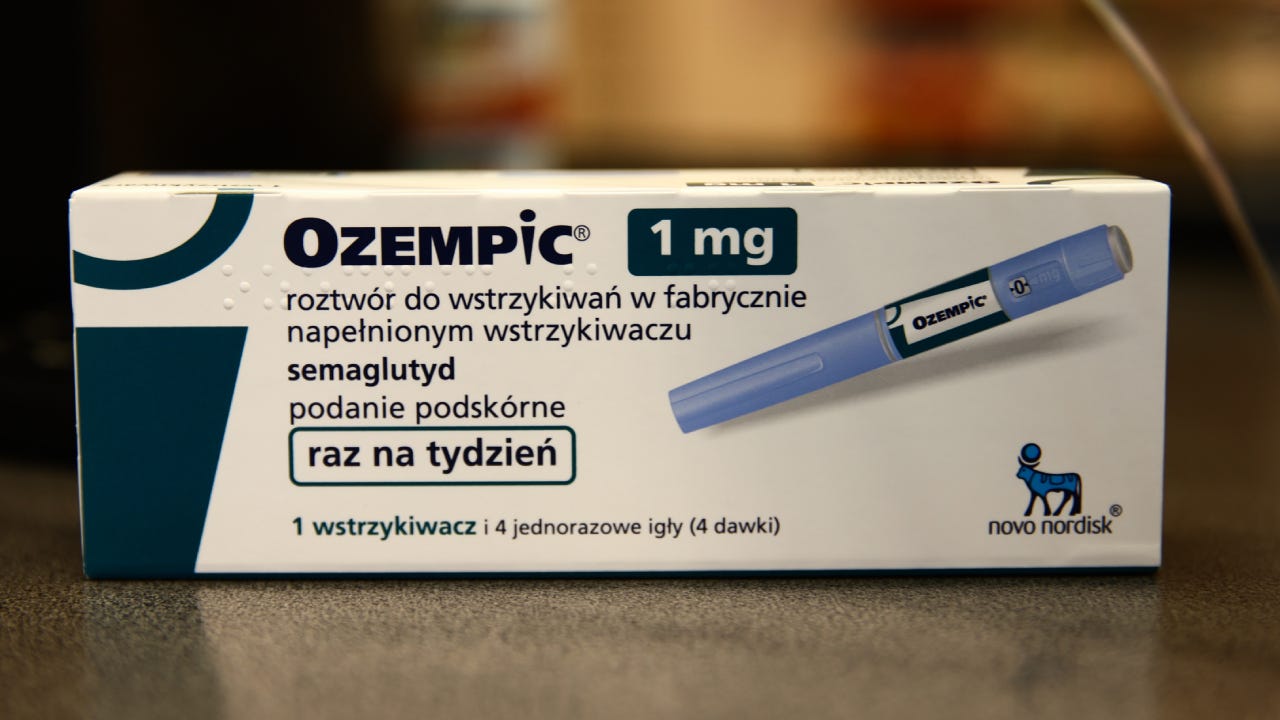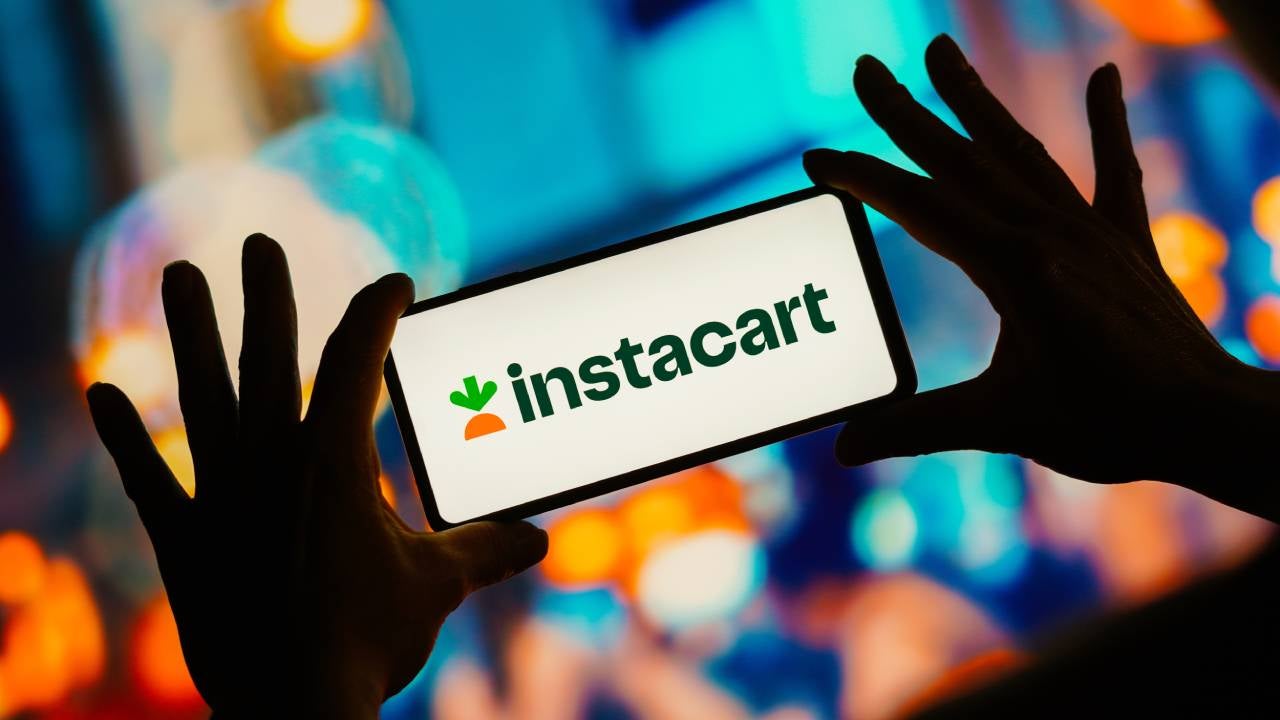5 weight-loss drug stocks to watch as Ozempic, Zepbound sales surge

Treating America’s obesity epidemic is turning into big business. Two pharmaceutical companies, Eli Lilly (LLY) and Novo Nordisk (NVO), are leading the weight-loss revolution with a new class of drugs known as GLP-1 agonists.
Surging revenue and growing excitement has led some analysts to compare the success of GLP-1 drugs in the health and wellness market to the artificial intelligence boom in the tech industry.
The rise of GLP-1 drugs
Drugs like Ozempic from Novo Nordisk and Zepbound from Eli Lilly have taken the market by storm, not only for their effectiveness in weight management but also for the significant boost they’ve given to company stock prices.
The boom is fueled by a class of drugs known as GLP-1 agonists. GLP-1 is a naturally occurring hormone in the body that is produced after you eat, helping your body manage blood sugar, regulate insulin and curb hunger while slowing down digestion. GLP-1 agonists bind to GLP-1 receptors in the body, mimicking the effects of the hormone.
The first GLP-1 drug was Byetta (exenatide), approved in 2005 for type 2 diabetes. Almost five years later, Novo Nordisk introduced Victoza (liraglutide), another diabetes drug based on human GLP-1. In 2014, liraglutide became the first GLP-1 medication approved for weight management in the U.S.
However, the real turning point came about two years ago when Novo Nordisk’s semaglutide (marketed as Ozempic for diabetes and Wegovy for weight loss) revolutionized the field. Unlike its predecessors, semaglutide required only weekly injections, instead of daily or twice-daily dosing.
Unlike many other weight-loss medications, GLP-1s have shown consistent positive results in clinical trials. The lack of readily available and effective weight-loss alternatives makes GLP-1s a standout option with millions of potential customers in the United States alone.
The American Association for the Advancement of Science named GLP-1 drugs as the scientific breakthrough of 2023, noting that these treatments “are reshaping medicine, popular culture and even global stock markets.”
GLP-1s spur revenue, drive up stocks for drug companies
The success of GLP-1 drugs has amplified investor interest in Big Pharma companies.
As the first company to widely market and distribute GLP-1 drugs, Novo Nordisk has seen its share price leap 137 percent in just two years, from $53 a share in May 2022 to $126 in May 2024. The company also reported sales growth of 36 percent in 2023.
Novo’s market value is now greater than the gross domestic product of Denmark, its home country.
But Eli Lilly, the Indianapolis-based pharmaceutical company and fellow diabetes drug maker, wasn’t far behind. Zepbound, its drug to treat chronic obesity, was approved by the FDA in November 2023.
Revenue for Eli Lilly jumped 25 percent during the first quarter of 2024 compared to the same time last year. It’s now one of the best performing stocks in the S&P 500.
Eli Lilly raised its full-year guidance during its May 1 earnings report, and expects full-year adjusted earnings of $13.50 to $14 per share, up from previous guidance of $12.20 to $12.70 per share.
LLY shares went for about $776 on May 8. The company’s 0.7 percent dividend yield only sweetened the deal for many investors.
Neither company shows signs of slowing. In February, Novo Nordisk announced plans to acquire three manufacturing facilities to meet demand for its blockbuster drugs. Eli Lilly is also racing to increase supply, with seven manufacturing sites either ramping up or under construction.
Other weight-loss drug company stocks to watch
As shares of Novo Nordisk and Eli Lilly climb, some investors are eyeing other pharmaceutical companies with promising new weight loss drugs in the works.
It’s quickly turning into a crowded field, as investors hope to find an undervalued gem with moonshot potential.
Here are other contenders in the expanding weight-loss drug market.
Amgen (AMGN)
Shares of biopharmaceutical giant Amgen (AMGN) spiked on May 3 after the company reported positive results from mid-stage trials of its investigational obesity drug, MariTide.
MariTide holds a potential edge over competitors when it comes to user experience: Patients would use a handheld auto-injector just once a month, or possibly even less frequently. This could be a game-changer compared to the weekly injections required by current market leaders, Wegovy (Novo Nordisk) and Zepbound (Eli Lilly).
However, detailed data from that mid-stage trial isn’t expected until the end of the year, and it may take several years for the drug to come to market.
On May 8, shares of Amgen went for $305, up from $230 a share in May 2023.
Viking Therapeutics, Inc. (VKTX)
Viking Therapeutics isn’t currently manufacturing a weight-loss drug, but their lead candidate, VK2809, is in phase two trials.
In addition to its experimental weight-loss injection drug, Viking also plans to start a phase two trial of a once-a-day oral weight-loss tablet later this year.
VKTX has seen significant growth over the last two years. On May 8, shares traded for about $79, up from around $22 two years ago.
VKTX could be an attractive buy for investors seeking a high-risk, high-reward opportunity. The future growth potential for Viking Therapeutics hinges on the success of VK2809. If approved, it could become a major player in the weight management market.
AstraZeneca (AZN)
AstraZeneca, a British pharmaceutical company, first tried to develop its own oral GLP-1 drug in-house. The company eventually abandoned the project in favor of licensing an experimental weight-loss pill from a Chinese company called Eccogene in November 2023.
This new drug, which is still in clinical trials,has the potential to cause fewer side effects than current injectable treatments.
AstraZeneca paid $185 million upfront to acquire the drug license, and agreed to shell out up to $1.8 billion more to bankroll future clinical, regulatory and marketing milestones.
The company dropped two other developmental programs, including stage two trials for a sickle cell medication, in order to free up resources for its obesity drug development.
While AstraZeneca is betting big on its newly licensed drug, the product is still in early trials, putting the company at a disadvantage to its competitors. Shares of AstraZeneca went for $76 on May 8 and haven’t budged much in a year.
Looking ahead
Investors are bullish about weight-loss drugs and the companies that make them. Analysts see tremendous growth potential, too.
J.P. Morgan Research forecasts that the GLP-1 market will exceed $100 billion by 2030, and total GLP-1 users in the U.S. may number 30 million by the end of the decade — around 9 percent of the overall population.
Meanwhile, Goldman Sachs predicted in February that these new weight-loss drugs could boost the U.S. gross domestic product by 1 percent in the coming years.
It’s impossible to predict which companies will develop the most effective and safest GLP-1 drugs over time, which only adds to investor uncertainty — and excitement — about future earnings.
Editorial Disclaimer: All investors are advised to conduct their own independent research into investment strategies before making an investment decision. In addition, investors are advised that past investment product performance is no guarantee of future price appreciation.






